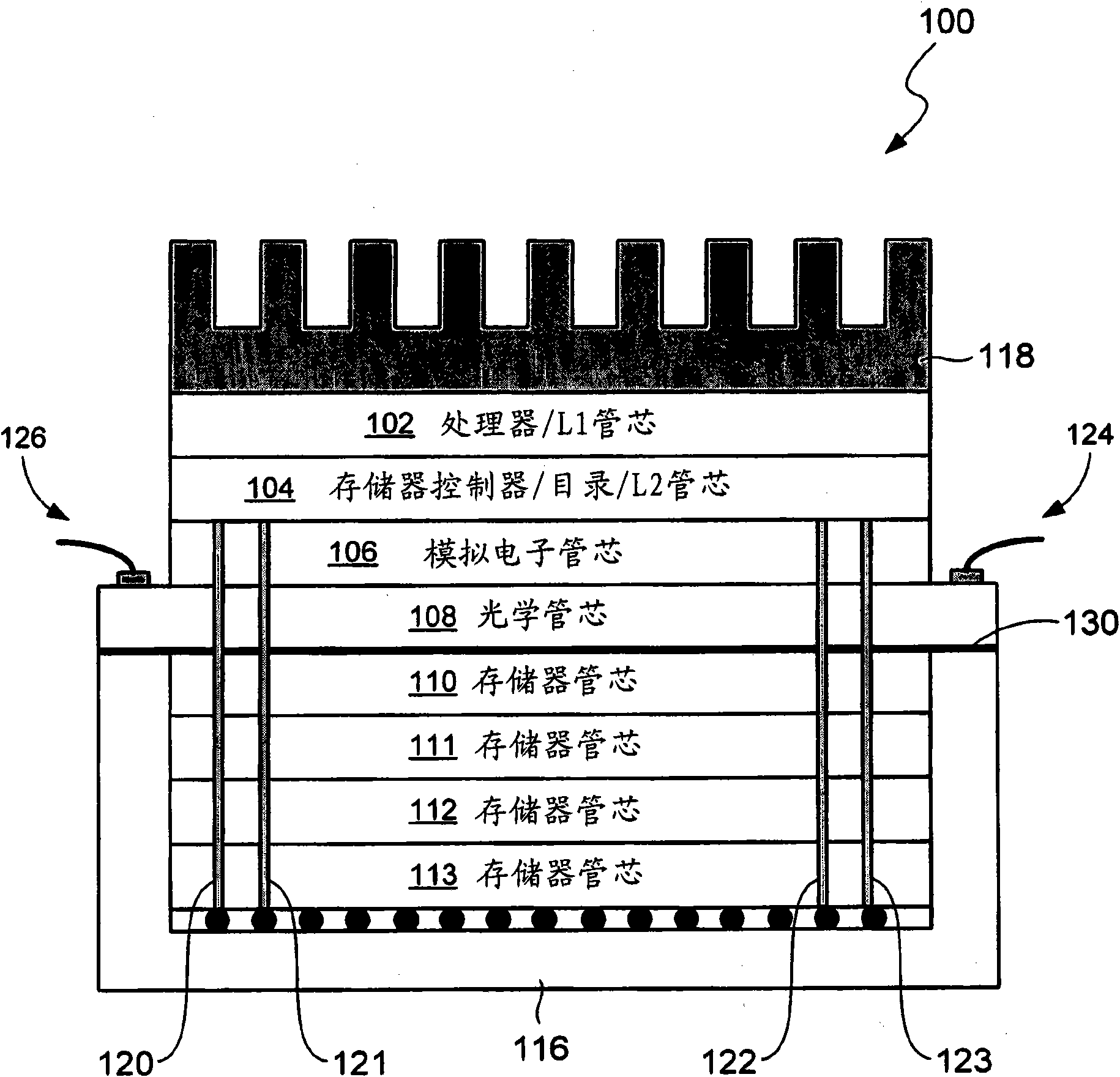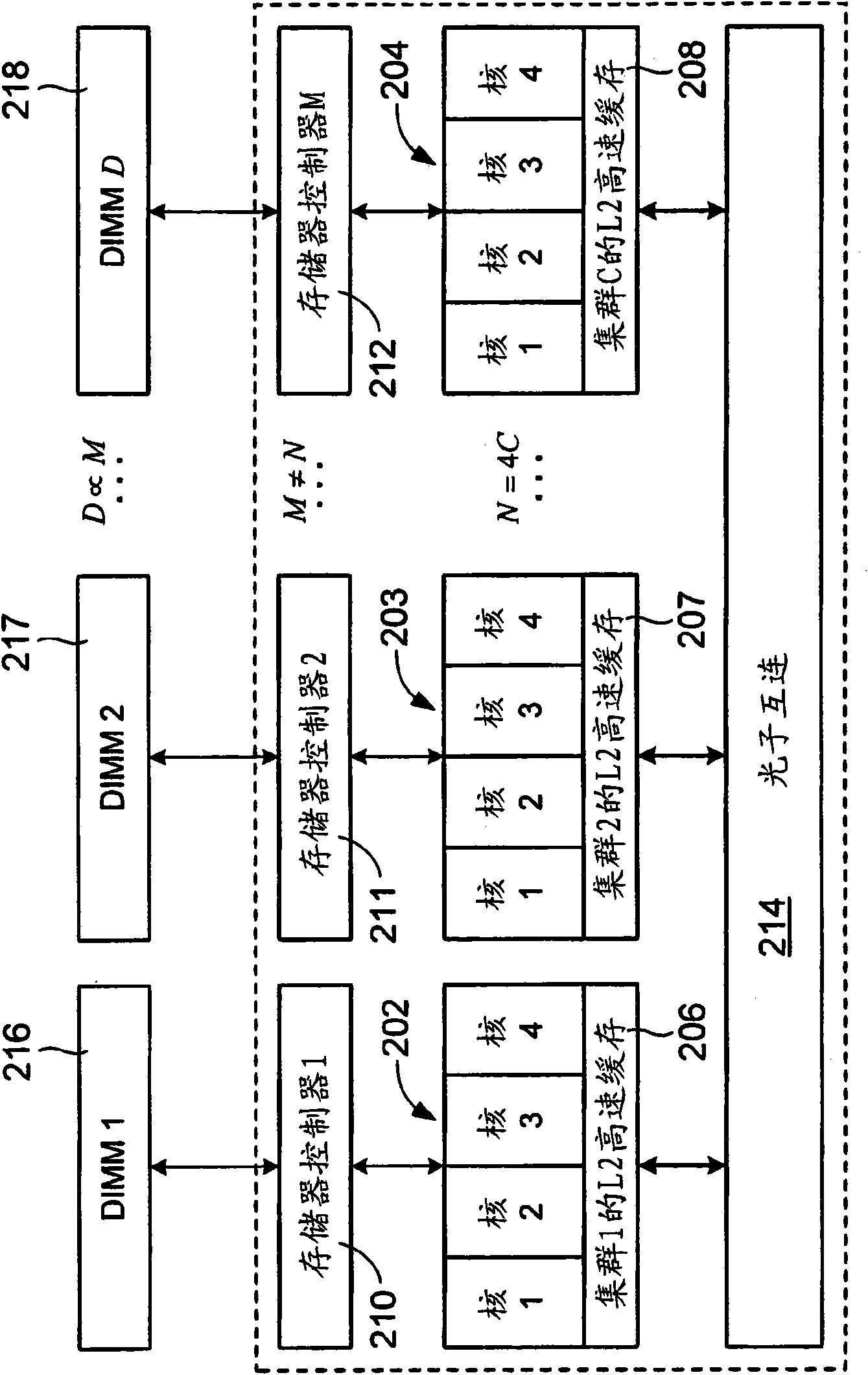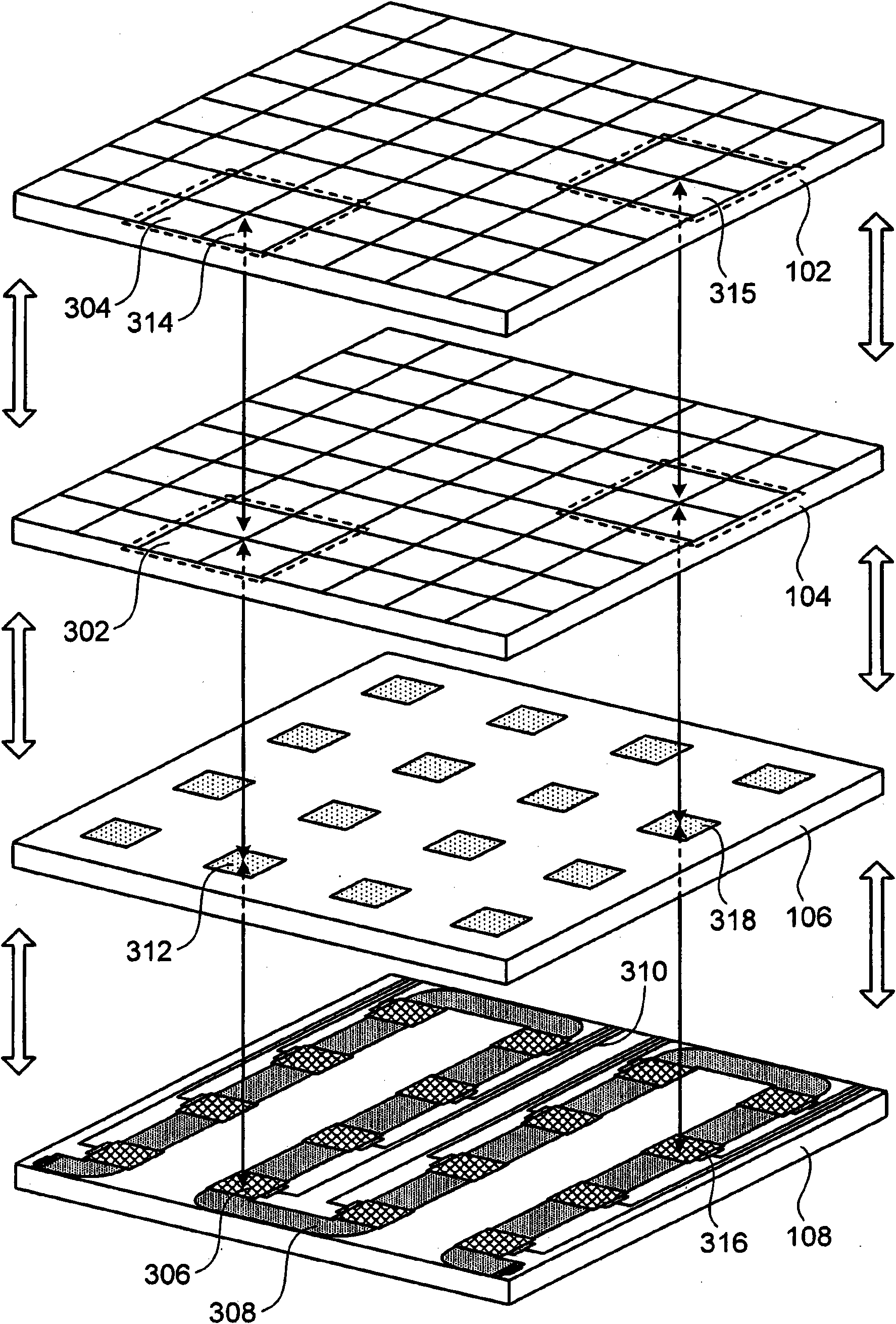Photonic interconnects for computer system devices
A computer system, photonic technology, applied in the field of photonic interconnection, can solve the problems of energy cost limiting bandwidth, slow growth and so on
- Summary
- Abstract
- Description
- Claims
- Application Information
AI Technical Summary
Problems solved by technology
Method used
Image
Examples
Embodiment Construction
[0030] Various embodiments of the invention relate to photonic interconnects. These photonic interconnects provide on-chip photonic interconnections between computer system components (eg, cores, clusters, memory controllers). In addition, some embodiments of the photonic interconnection also provide off-chip photonic interconnection to computer system components on external devices. Embodiments of the invention also include photonic interconnects having nanophotonic components, including components having dimensions typically smaller than a wavelength or smaller than a micron.
[0031] These photonic interconnects provide data transfer rates off-chip faster than conventional pins located along the edge of the chip, provide greater computing bandwidth, and provide lower on-chip and off-chip communication than conventional metal lines energy costs and can be scaled up or down to accommodate additional components, such as processors with any number of cores. The architecture o...
PUM
 Login to View More
Login to View More Abstract
Description
Claims
Application Information
 Login to View More
Login to View More - R&D
- Intellectual Property
- Life Sciences
- Materials
- Tech Scout
- Unparalleled Data Quality
- Higher Quality Content
- 60% Fewer Hallucinations
Browse by: Latest US Patents, China's latest patents, Technical Efficacy Thesaurus, Application Domain, Technology Topic, Popular Technical Reports.
© 2025 PatSnap. All rights reserved.Legal|Privacy policy|Modern Slavery Act Transparency Statement|Sitemap|About US| Contact US: help@patsnap.com



